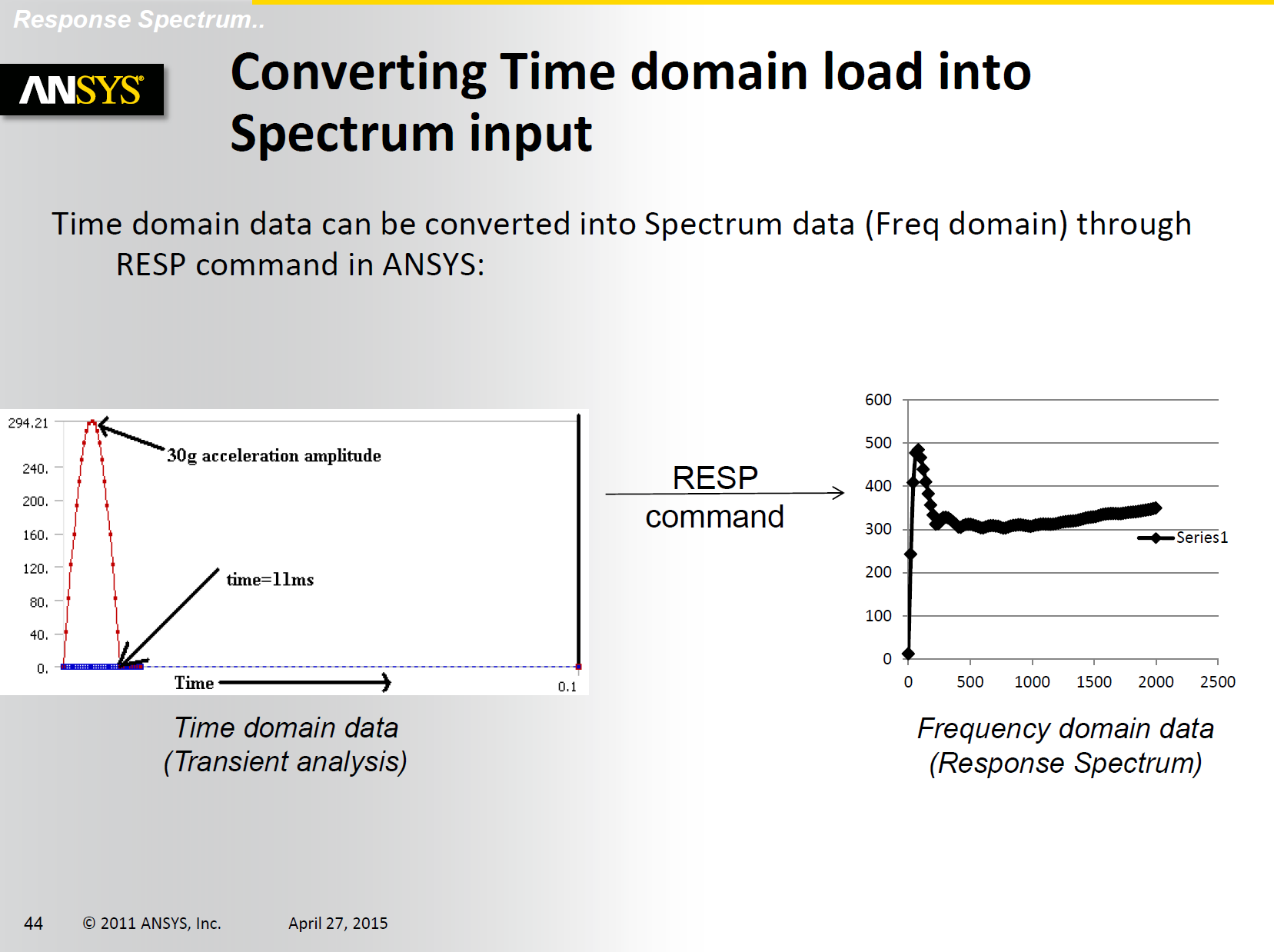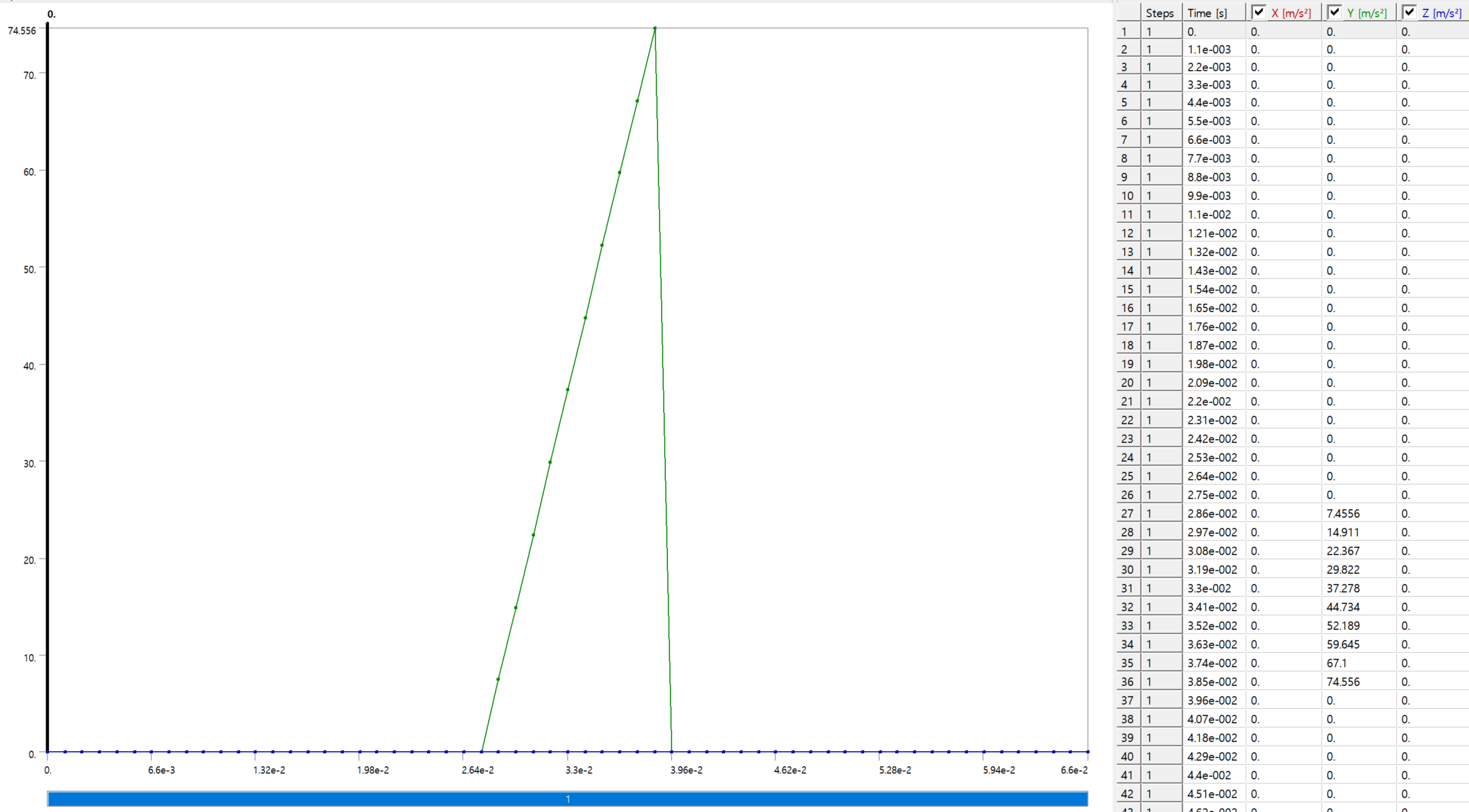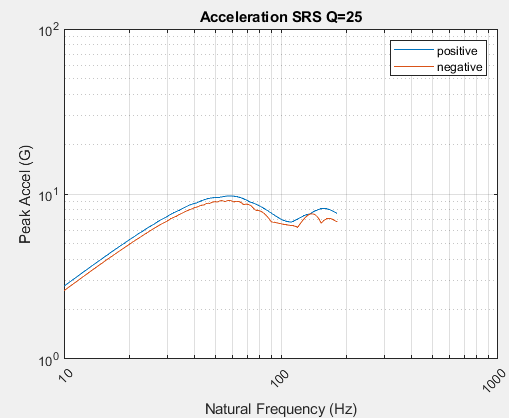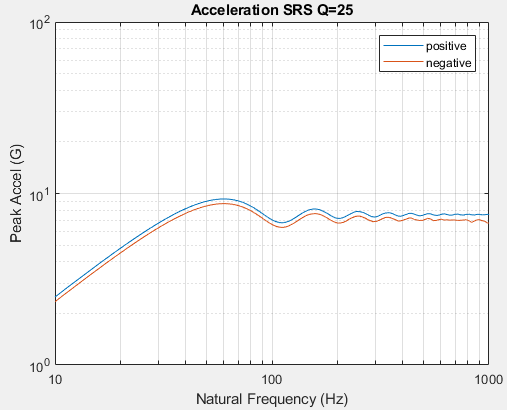TAGGED: apdl, mechanical, structures
-
-
April 6, 2023 at 6:35 am
YJ L
Subscriberi want to compare the results with transient analysis and response spectrum. the picture says to use RESP Command, but i don't know exactly which command and how to use them. How do i write the RESP command to convert 20g acceleration- time 5ms data into frequency-acceleration data?

(this picture is my data)
-
April 7, 2023 at 7:34 pm
mrife
Ansys EmployeeHi YJ
That RESP command is an Mechanical APDL command. It is not a WB Mechanical function/feature. You can look up that command in the Ansys MAPDL Help - there is an example on using it though it assumes that a time transient analysis has been done and uses the displacement time history of a node as the input.
There is a LF post on using this though it looks like the format got messed up somehow; there are "n" instead of new line character so it's all one big paragraph! Here is the link to that:
/forum/forums/topic/how-to-create-a-shock-response-spectrum-from-time-history-data-with-apdl-commands/
Mike
-
April 7, 2023 at 9:57 pm
peteroznewman
SubscriberHello YJ L,
You said you want to convert a 20 g amplitude, 5 ms duration signal into a Response input spectrum, but when I look at the plot of your data, the triagular pulse has a magnitude of 74.556 m/s^2 (7.6 g) and a duration of 0.0121 s. So which is it?
Software tools outside of Ansys are available to convert a time-history into a Shock Response Spectrum. I use the free, Stand-Alone Executable Version of Vibrationdata because it doesn’t require a copy of matlab to be installed. If you have matlab installed, there is a larger toolkit that is also free. Look for the relevant links on this page: https://vibrationdata.wordpress.com/
Conversion of time-history data requires you to choose the Q factor that defines the damping in your structure. If you know the critical damping ratio for your structure, Zeta, then Q = 1/(2Zeta). For example, if your structure has a critical damping ratio of 2%, then Q = 25. You add damping to the excitation because the Modal analysis provides undamped modes. What is the Q factor for your structure?
What is the frequency range you want to study for your structure? I suspect the sampling frequency used in the representation of this triangular pulse is too low as it is only 909 Hz (sampling delta t = 0.0011 s).
By sampling the triangular pulse at 10,000 Hz, the Shock Response Spectrum can be calculated above 1000 Hz.
-
- The topic ‘How to Change Time-Acc graph to the Freq-Acc graph?’ is closed to new replies.


- The legend values are not changing.
- LPBF Simulation of dissimilar materials in ANSYS mechanical (Thermal Transient)
- Convergence error in modal analysis
- APDL, memory, solid
- How to model a bimodular material in Mechanical
- Meaning of the error
- Simulate a fan on the end of shaft
- Real Life Example of a non-symmetric eigenvalue problem
- Nonlinear load cases combinations
- How can the results of Pressures and Motions for all elements be obtained?

-
3997
-
1461
-
1287
-
1124
-
1021

© 2025 Copyright ANSYS, Inc. All rights reserved.










